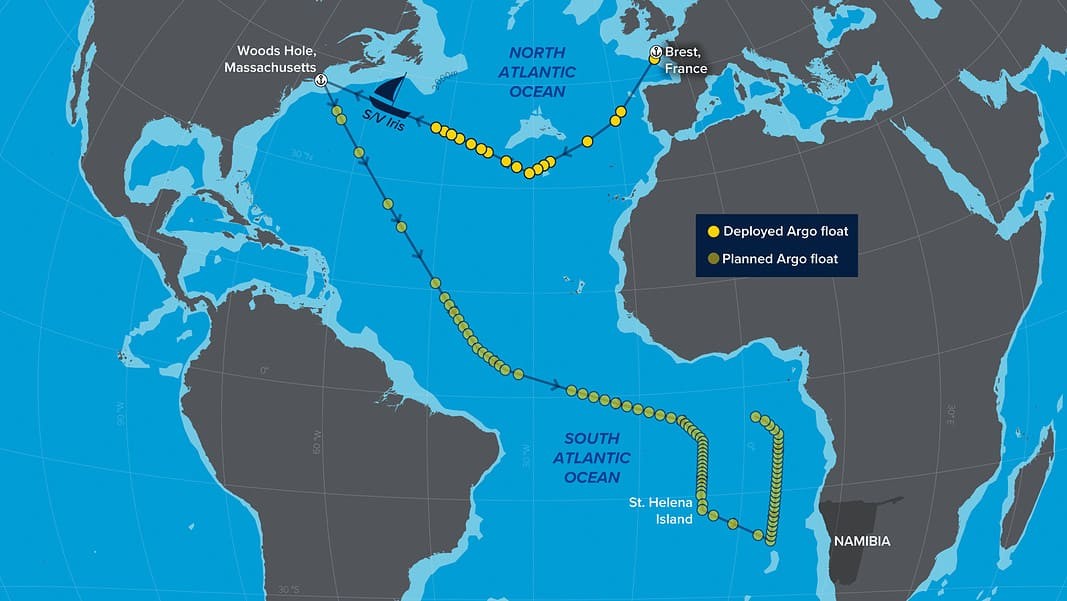The last of 100 data collection floats in support of the international Argo Program has been deployed, according to the Woods Hole Oceanographic Institution.
The international Argo program maintains a global array of about 3,800 floats that measure pressure, temperature and salinity of the upper 2,000 meters (1.2 miles) of the ocean.
WHOI, the US National Oceanic and Atmospheric Administration and other partners began deploying the “Argo floats” last month.
The French sailing vessel Iris deployed the initial batch of 17 Argo floats across the Atlantic in December. After resupplying in Woods Hole, Massachusetts, the Iris took sail again in January, and the last float was deployed this week, off the coast of Africa. The crew is expected to arrive back at their home port in France by mid-March.
This low-carbon research mission using an 82-foot (25-meter) sailing vessel was made possible through a new partnership between the private oceanographic company Blue Observer and international Argo Program partners from WHOI, NOAA, Fisheries and Oceans Canada and Europe.
According to Peter de Menocal, president and director of WHOI:
“Argo has revolutionized our ability to detect and monitor how the global ocean is changing as climate changes. The whole ocean warming trends observed by Argo floats is proof positive that climate change is due to greenhouse gas emissions.”
The initiative was born during the international COVID pandemic, when deployment of Argo floats and other oceanographic instruments by research and commercial vessels was sharply curtailed by COVID-19 restrictions.
Mathieu Belbéoch, a manager of the Global Ocean Observing System, explained:
“About 1,000 Argo profiling floats must be deployed every year to sustain the Global Ocean Observing System. Often, they are deployed opportunistically by research ships, but these are very costly, and their trajectories are tied to specific missions and are not able to fill all the gaps or work in all seasons. Collaborations with citizens allow us to reach remote and not yet well sampled areas of the ocean, filling critical observational gaps.”
(Featured image credit: ©Natalie Renier/WHOI)

